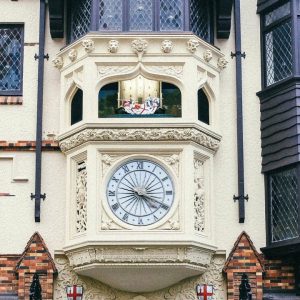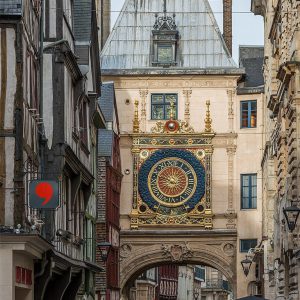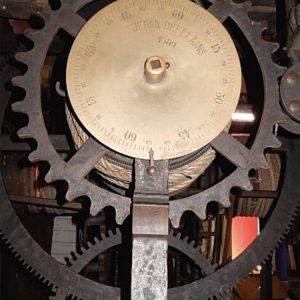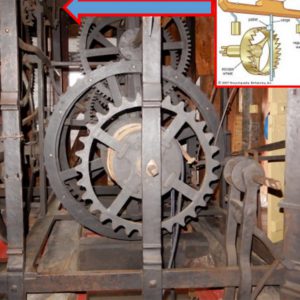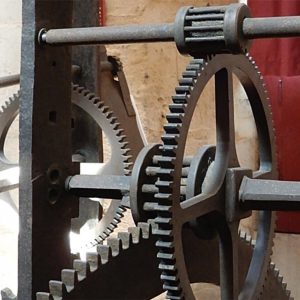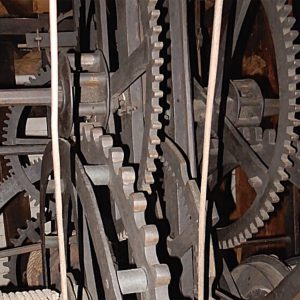As a member of POVG, one cannot help being impressed by the Observatory’s collection of clocks. The Cooke Heliochronometer, the Kulbergs, the Shortts, the marine chronometer, even our external sundials (yes, we have 2). All of these are relatively modern so the opportunity to see a truly ancient clock was not to be missed. Accordingly, as we were planning to visit Rouen ([where Joan of Arc was burned at the stake], a visit to the Gros Horloge was added to the itinerary. This clock is said to be the model for the clock at the Hay St end of London Court although as you can see, they are only vaguely similar. The clock is located in the Rue du Gros Horloge is a very well decorated Renaissance Arch and Belfry. The movement was constructed in 1389 making it one of the oldest in France.
The days of the week and the moon phases are also shown. The dial has only one hand. Although it was replaced by an electric clock in 1928 the mechanism is still operable! The clock is powered by falling weights attached to drums; these drive gears and pinions which are regulated by a verge & foliot escapement. [see photo and insert diagram below] Gear trains then drive the hours and quarter hours. The forged iron gear wheels and constructed
pinions can be seen in the close-up photo.
To see an animation of a verge & foliot escapement click below:
Also located in the belfry is the mechanism from the clock in the church of Saint Vivien. The mechanisms are very similar however a closer look at the last two photos will show how the manufacturing techniques had improved. The teeth on the gear wheels are much more finely shaped and the pinions are correspondingly more accurately made.
This brief report barely does justice to a visit to the Gros Horloge & the Belfry. The decoration of the arch and the clock face is worthy of greater study; the view from the top is certainly worth the climb and gives you a good view of the cathedral towers. A must-do when you visit Rouen.

